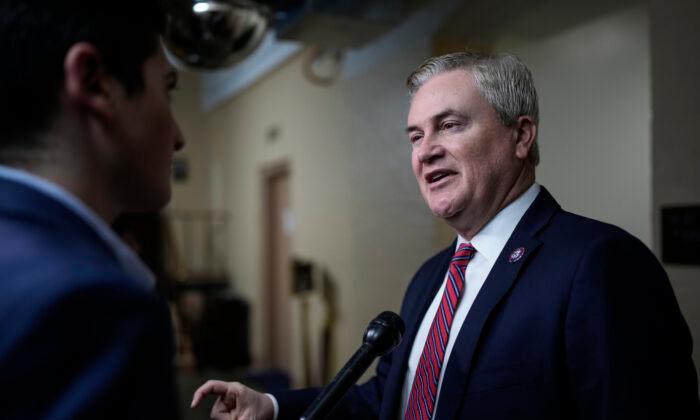House Committee on Oversight and Accountability Chairman James Comer (R-Ky.) is demanding to know why the Federal Employee Health Benefits Program (FEHBP) is shelling out more than $1 billion annually in payments for people who aren’t eligible participants.
“This is a flagrant waste of funds and may be driving up premium costs for eligible participants.”
The FEHBP, which is managed by OPM, is the health insurance program offered solely to the 2.2 million federal civil service employees, their families, and retirees. More than 8 million people currently are counted as participants in FEHBP.
The FEHBP, the largest health benefits program in the country, cost the federal government more than $59 billion in 2021. The OPM manages the federal government’s 2.2 million active career civil servants, as well as the Federal Employee Retirement System and the Civil Service Retirement System programs, which together represent the federal government’s third-largest entitlement program. There are about 2.7 million federal employee retirees.

In 2016, hackers linked to the Chinese Communist Party broke into OPM’s computer system and stole personal and financial information for nearly 5 million federal workers and retirees.
Comer told Ahuja that the GAO report “suggests OPM has been aware of this problem for years but has consistently failed to address it effectively. As GAO recounts, OPM acknowledged the possibility of a problem when it issued regulations in 2018 allowing agencies and participating insurers to request proof of eligibility for federal employees’ family members. OPM did not, however, actually require proof of eligibility.”
Then three years later, Comer said, citing the GAO report, “OPM issued verification requirements for ‘certain types’ of new enrollments, but left other new enrollments and all preexisting enrollments out of this verification regime. To this day, according to GAO, ’OPM does not plan to establish a monitoring mechanism to identify and remove ineligible family members who already have FEHB coverage.'”
Making the potential magnitude of the problem much worse, “GAO determined OPM’s annual fraud risk assessment of the FEHB program fails to cover “fraud risks associated with ineligible members in the program,'” Comer pointed out.
The GAO analysis estimated that improper payments on behalf of one eligible FEHBP enrollee’s family with two ineligible enrollees exceeded $100,000 over a dozen years.
“Imagine the levels of waste, fraud, and abuse that OPM could already have uncovered and corrected if it had in place during each relevant year adequate verification, monitoring and auditing requirements for the FHEB program, which has covered approximately 8 million members annually since 2000,” Comer told Ahuja.
“Yet GAO stressed in its report that ‘OPM has not required employing offices or carriers to verify eligibility since the program’s inception in 1960.’ If GAO’s $1 billion estimate of annual impacts is correct, it is entirely possible OPM’s failure has led to several tens of billions of dollars in waste, fraud and abuse over the program’s 60-plus year existence,” Comer wrote.
In the GAO report cited by Comer, the congressional investigators observed that “OPM performs an annual fraud risk assessment of the FEHB program but has not included ineligible members as a fraud risk to the program. In fiscal year 2020, OPM conducted a fraud risk assessment and documented a fraud risk profile for the FEHB program. OPM determined the program was at a low risk of fraud overall.”
However, the investigators claimed OPM failed to include in its assessment the effect of benefit payments being made to ineligible participants.
“OPM acknowledged in discussions with GAO that not verifying eligibility for current members carries a risk of fraud and improper payments. OPM’s Office of the Inspector General has also documented instances of fraud and improper payments associated with ineligible members in the FEHB program,” the GAO report said.
Comer told Ahuja the oversight panel wants all documents concerning OPM’s management of fraud risks in connection to the FEHBP program, including estimates of how much the agency has paid annually to ineligible participants.





